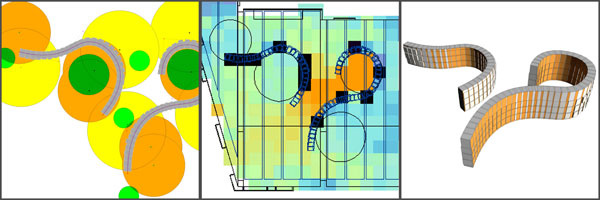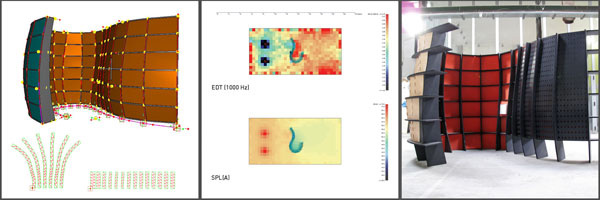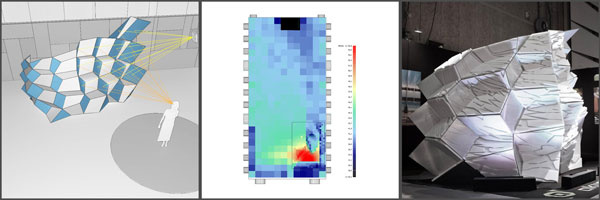Brady Peters: Complex Surfaces – Sound and Space Defining Surfaces for Architecture

The aim of this project is to investigate new interfaces between acoustic engineering and architectural design so as to improve the integration of the spatial and sonic dimensions in architectural design. The project is a collaboration between CITA, the Centre for Information Technology and Architecture at The Royal Danish Academy of Fine Arts School of Architecture, the architectural practice JJW, and engineering company Grontmij/Carlbro.
The research sites itself between the practice of architecture and that of acoustical engineering.
The project seeks to develop new integrated tools and working practices to enable better communication and workflow between design partners.
The project attaches itself to the development of new digital practices in both architecture and acoustic engineering.
The practice of acoustical engineering has dramatically changed with the proliferation of new digital tools, and the practice of architectural design now takes place uniquely through computer-aided design systems. This creates a shared digital platform that can be exploited to create better interfacing for a joint design and analysis practice.

The project lends itself to three core development areas: (1) the development of computational and parametric design tools within an architectural CAD platform, (2) the implementation of these new tools to create acoustically performance-driven surfaces in architecture, and (3) the modeling and manufacture of these new concepts through the linking of the digital design tools to computer-controlled fabrication technologies.
The traditional medium of architectural design is the drawing and as such, is visually biased.
Today’s architectural practice takes place through computer aided design programs (CAD).
Computer aided design programs have the potential to include acoustic simulation. However, no contemporary architectural design programs do so. The traditional separation between architect and acoustic consultant has meant that sound remains outside the primary design tools for architecture. This lack of integration impedes workflow and makes iterative feedback mechanisms cumbersome and expensive, thereby slowing down or prohibiting innovation and experimentation.

The last five years have seen great development within digital modeling software for architecture, allowing better communication between design partners though the sharing of highly detailed 3D models, the potential for direct connection to digitized manufacture, and open-ended parametric design practices which are the enabling the creation complex surfaces and variable geometries.
These new digital tools promise an "optimization" of the architectural design practice where the architectural drawing becomes the interface between environmental data and the implementation of architectural design.
The scientific goals for this project are to understand how the integration of acoustical analysis into architectural CAD programs will have consequence for the architectural design of space and surface?

